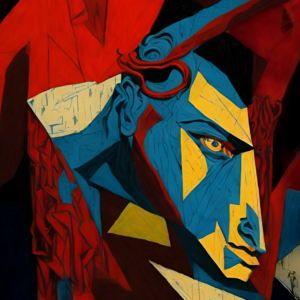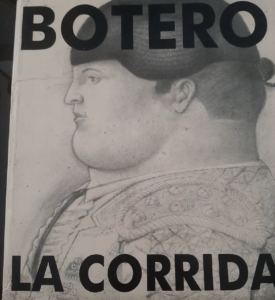EL ARTE Y LA BARBARIE: UNA REFLEXIÓN NECESARIA
En el verano nos maravillamos con la pintoresca belleza de las playas, los atardeceres y las fiestas populares. Estas representaciones sublimes se ven reforzadas por las numerosas verbenas y ferias que se celebran en toda España, destacando el famoso San Fermín como un brillante ejemplo de lo típicamente español. Las maravillosas marinas de inspiración sorollesca nos transportan a recuerdos estivales lejanos. Sin embargo, hoy en día, a menudo nos horrorizan las construcciones gigantescas junto a las playas y la invasión de millones de turistas que dividen las orillas con sus coloridas toallas.
Lo mismo ocurre con las verbenas populares y el despilfarro taurino que se lleva a cabo en cientos de pueblos y ciudades, con todo tipo de corridas, encierros y otros creativos malos tratos. Es aquí donde debemos abandonar la visión pintoresca y reemplazarla por algo más dantesco.
No cabe duda de que la tauromaquia exhibe un maravilloso juego de tensiones y una fascinante paleta de colores, donde el rojo supone el más temido. Pero no podemos afirmar desde aquí que conmueva con esa fusión de drama, locura y arte.
Es innegable que la tauromaquia ha sido una fuente de inspiración desde hace siglos. Ha influido en nuestra herencia cultural, desde los primeros artistas de Knosos hasta grandes maestros como Goya, Mariano Fortuny y, por supuesto, Picasso. Sin embargo, en muchas ocasiones, lo pintoresco y lo dantesco van de la mano en este contexto. No pretendemos aburrir con una reflexión sobre las diferentes categorías estéticas, pero sí queremos reflexionar sobre lo estético y lo dantesco, que a menudo se interpreta con una perspectiva que nos lleva a lo romántico y finisecular, donde incluso el género bélico era considerado excepcional para mostrar la grandeza de los desastres de la guerra, como lo hizo el genial Goya, dotándolos de una brutal modernidad.
Es en este punto donde debemos plantear una pregunta crucial: ¿El arte justifica la barbarie? Si afirmamos que la tauromaquia es arte y ha sido representada por grandes genios a lo largo de la historia, ¿significa que debemos defenderla sin cuestionar sus implicaciones éticas? Si aplicáramos esa lógica, deberíamos también considerar la guerra como un arte aún más impactante y, sin embargo, no dejamos de condenarla y de impedir darle culto.
El arte es una expresión poderosa, capaz de transmitir emociones, reflexiones y críticas sociales, de ahí que reivindiquemos la libertad y la necesidad de no censurar las formas de expresión. Pero a la vez no podemos justificar la práctica de la crueldad y el sufrimiento que conlleva en nombre del arte. Como sociedad, es necesario cuestionar nuestras tradiciones y prácticas culturales para que el aprecio en la creatividad no blanquee el maltrato animal.
ART AND BARBARISM: A REFLECTION
During the summer, we admire the picturesque beauty of the beaches, sunsets, and popular fiestas. These representations are often enhanced by the numerous verbenas and fairs held throughout Spain, with the famous San Fermín festival being a prime example of Spanish culture. The beautiful Sorolla-inspired marinas evoke memories of past summers. Nowadays, however, the gigantic constructions next to the beaches and the invasion of millions of tourists who line the shores with their colourful towels can be alarming.
The same goes for the popular verbenas and the bullfighting extravaganza that takes place in hundreds of towns and cities, with all kinds of bullfights, running of the bulls and other forms of mistreatment. It is important to abandon the picturesque vision and replace it with a more realistic one.
There is no doubt that bullfighting is a wonderful game of tension and a fascinating palette of colours, the most feared of which is red. But we cannot say from here that it moves with this fusion of drama, madness and art.
It is undeniable that bullfighting has been a source of inspiration for centuries. It has influenced our cultural heritage, from the first artists of Knossos to great masters such as Goya, Mariano Fortuny and, of course, Picasso. In many cases, however, the picturesque and the Dantesque go hand in hand. We do not want to bore you with a reflection on the various aesthetic categories, but we do want to reflect on the aesthetic and the Dantesque, which is often interpreted from a perspective that takes us back to Romanticism and the fin de siècle, when even the genre of war was considered exceptional in order to show the grandeur of the catastrophes of war, as the brilliant Goya did, giving them a brutal modernity.
At this point we have to ask a crucial question: Does art justify barbarity? If we affirm that bullfighting is an art and has been represented by great geniuses throughout history, does this mean that we should defend it without questioning its ethical implications? If we were to apply this logic, we should also consider war to be an even more striking art, and yet we continue to condemn it and prevent it from being revered.
Art is a powerful means of expression, capable of conveying emotions, reflections and social criticism, so we demand freedom and the need not to censor forms of expression. But at the same time, we cannot justify the practice of cruelty and the suffering it causes in the name of art. As a society, we need to question our cultural traditions and practices so that the celebration of creativity does not whitewash animal abuse.




